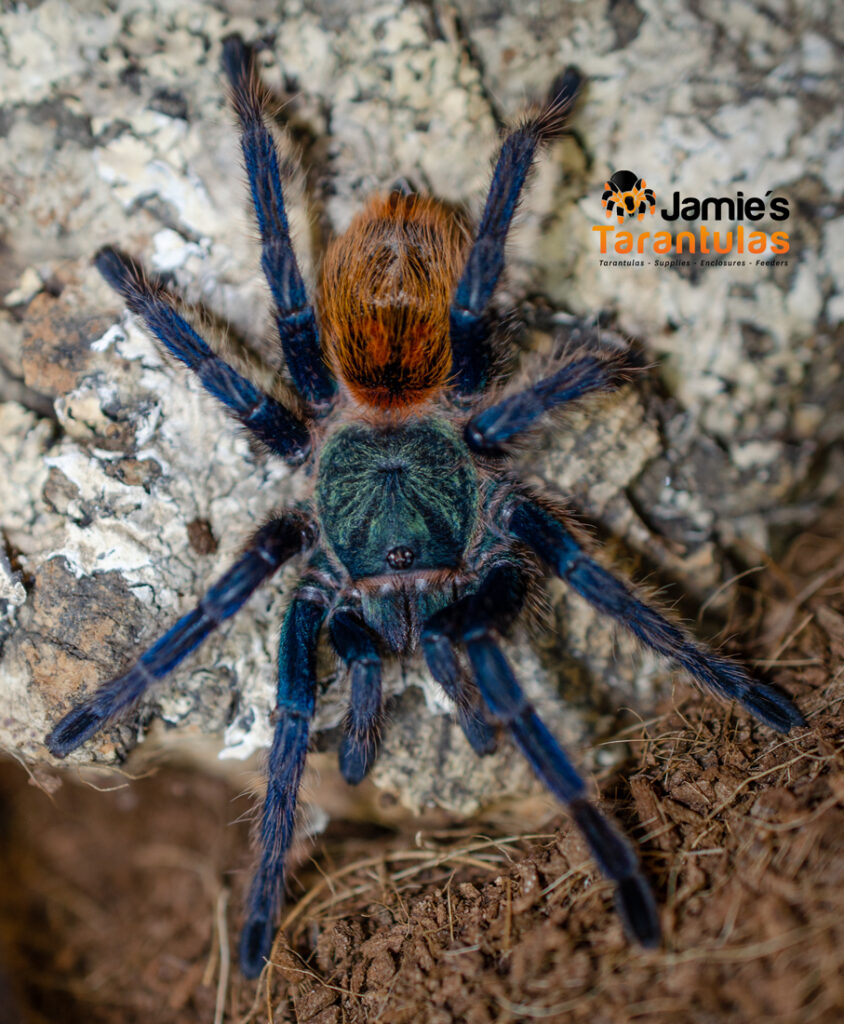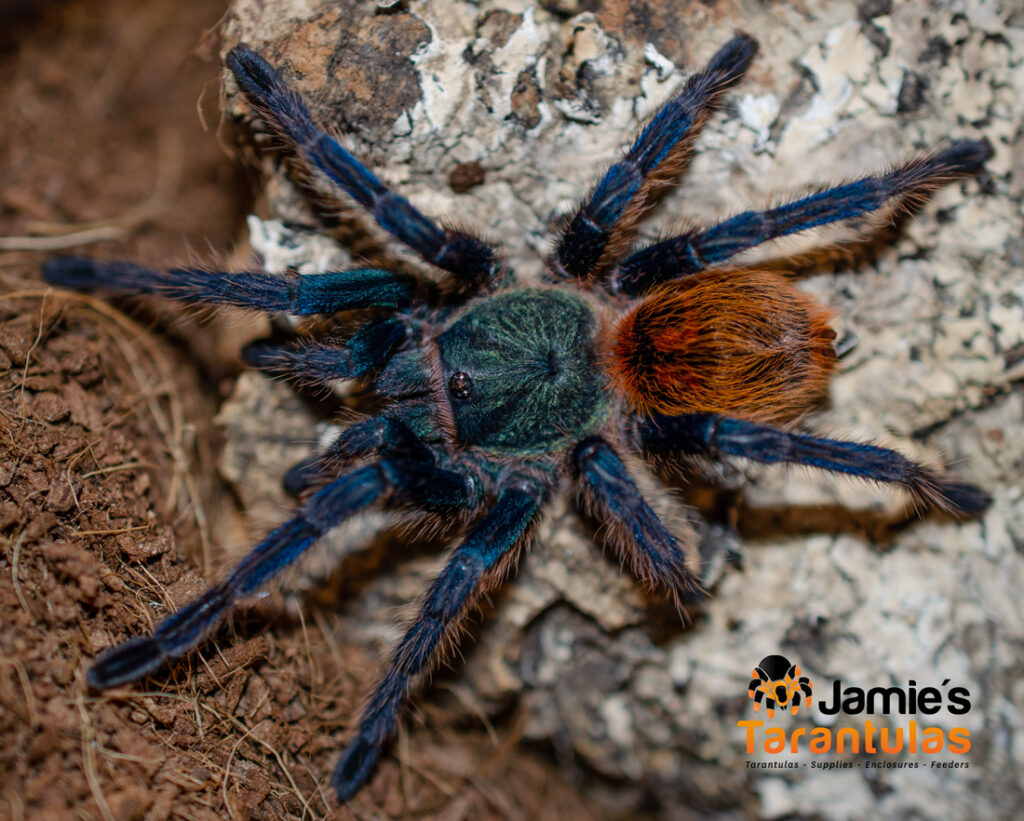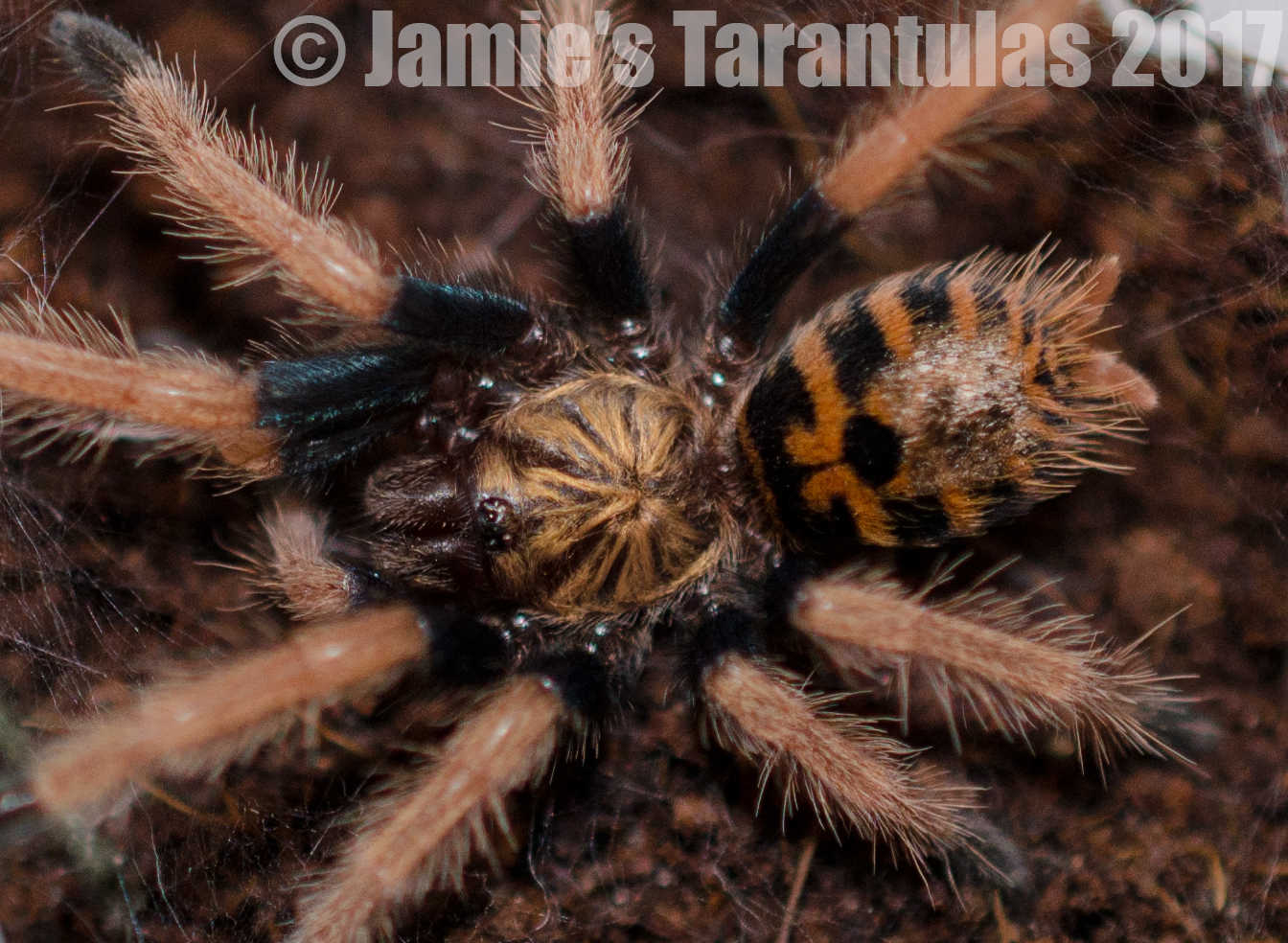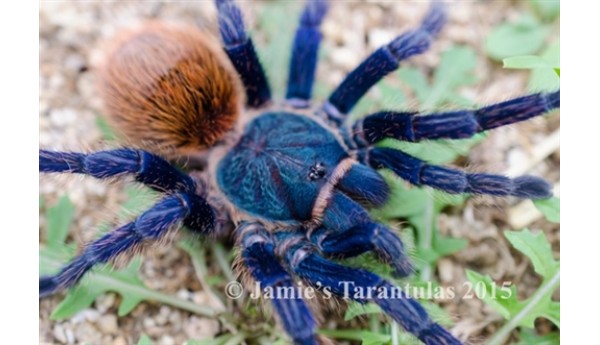
I mean... what's not to love?
GBB can thrive in a wide range of conditions.
They are hardy and forgiving.
The species has one of the best feeding responses of any tarantula and are known to take down prey large for their size.
They grow rather quickly for a tarantula.
They have beautiful coloring and striking patterns that change as they molt and grow.

The little spiderlings have black and tan stripes on their legs and are topped with metallic gold. Their abdomen is adorned with what looks like a black and red tribal tattoo.

Many juvenile specimens will go though a short phase where their gold carapace turns flower-pedal pink.
The carapace, once gold and then pink will later become aquamarine. The Black and Tan legs will turn blue and the abdomen will become orange.
Smaller slings like to burrow while juvenile and larger specimens are some of the most talented (and excessive) webbers of my collection. They will put webbing everywhere they can reach it's awesome!
Origin: New World. Native to the unique and isolated Paraguaná Peninsula in Northern Venezuela.
Difficulty: Beginner
Type: Terrestrial
Adult Size: 4.75-6.25"
Growth speed: Fast
Longevity: Males 3-6 years, females 8-14 years
Temperament: Often considered a docile species, I find they can be skittish and may flee and will sometimes flick hairs if disturbed. Bites are rare and not considered medically significant.
Bite potency: Mild
Urticating hairs: Yes
Ideal Temperature: 71 to 76°
Humidity: Low to Medium
Fun Fact: GBB is undoubtedly "our customers favorite tarantula"
Enclosure: For most small spiderlings we recommend the Terrestrial Spiderling Enclosure Kit however, GBB tend to not have any issue going straight into a Terrestrial Juvenile Enclosure Kit provided it's properly arranged for the little one. Specimens over 2" or so can go into a 7x7x11" complete terrestrial enclosure or 8x8x14" Adult Complete Terrestrial . Click HERE to find out how to you measure a tarantula.Be sure to give your growing GBB many places to hang it's webbing.
Substrate: While most adults will adopt a hide, slings often prefer to burrow. Cocofiber, vermiculite, peat moss and/or potting soil (or a mix) are all excellent substrate choices. Please make sure the substrate you choose is organic and chemical/fertilizer free. Do not use sand, pebbles, sharp rocks or wood chips or anything else that could potentially cut or injure the tarantula.
Cork tubes half buried in substrate can provide a starter area for larger GBB to adopt. In many cases a larger specimen would rather use what they find to web up their enclosure than create a burrow from deep substrate as they may (or may not) have done when they were young.
Water: Larger spiders 2” and over can be provided with a shallow water dish if desired although it is not necessary. The water bowl should be rinsed our every time it is refilled.
Feeding: Adults will eat every 7-14 days depending on the size of the spider and it's prey. Spiderlings should eat more often, every 5-7 days. We feed all our tarantulas B. lateralis roaches. A more detailed feeding, misting & troubleshooting guide can be found here: https://jamiestarantulas.com/guides/
Good Husbandry: Keep your tarantulas enclosure clean. food waste left in the enclosure will invite mold, mildew, mites, flies and other pests. The substrate does not need to be changed unless it is moldy, overly filthy or otherwise unfit for the tarantula. It is advised to remove uneaten prey items after a few minutes to hours. If using a feeder who will not “bother” a tarantula such as dubia roaches it is alright to leave them in the enclosure as long as they are not causing stress to the specimen.






Leave a Comment - Reply to